Health Tips for Adults
In this section:
- Healthy Weight
- Consuming Healthy Food and Beverages
- Physical Activity
- Being Good to Yourself
Consuming healthy foods, beverages, and snacks, and getting regular physical activity may help you reach and maintain a healthy body weight. Making suitable lifestyle choices may also help men and women prevent some health problems.

Here’s a quick overview of some ways to eat better and be more active.
- Choose whole grains more often. Try whole-wheat breads and pastas, oatmeal, or brown rice.
- Select a mix of colorful vegetables. Vegetables of different colors provide a variety of nutrients. Try collards, kale, spinach, squash, sweet potatoes, and tomatoes.
- At restaurants, eat only half of your meal and take the rest home.
- Walk in parks, around a track, or in your neighborhood with your family or friends.
- Make getting physical activity a priority.
- Try to do at least 150 minutes a week of moderate-intensity aerobic activity, like biking or brisk walking.
- If your time is limited, work in small amounts of activity throughout your day.
Learn more ways to move more and eat better—for yourself and your family!
Healthy Weight
If it is tough to manage your weight, you are certainly not alone in today’s world. In fact, more than 39 percent of American adults have obesity.1 Excess weight may lead to heart disease, type 2 diabetes, kidney disease, and other chronic health problems. Setting goals to improve your health may help you lower the chances of developing weight-related health problems.
How can you tell if you are at a healthy weight?
Your body mass index (BMI) can help you determine if you are at a healthy weight, overweight, or have obesity. BMI is a measure based on your weight in relation to your height. You can use an online tool to calculate your BMI NIH external link. A BMI of 18.5 to 24.9 is in the healthy range. A person with a BMI of 25 to 29.9 is considered overweight. Someone with a BMI of 30 or greater is considered to have obesity.
Another important measure is your waist size. Women with a waist size of more than 35 inches, and men with a waist size of more than 40 inches, may be more likely to develop health problems. Men are more likely than women to carry extra weight around their abdomen, or belly. Extra fat, especially in the abdomen, may put people at risk for certain health problems, even if they have a normal weight.
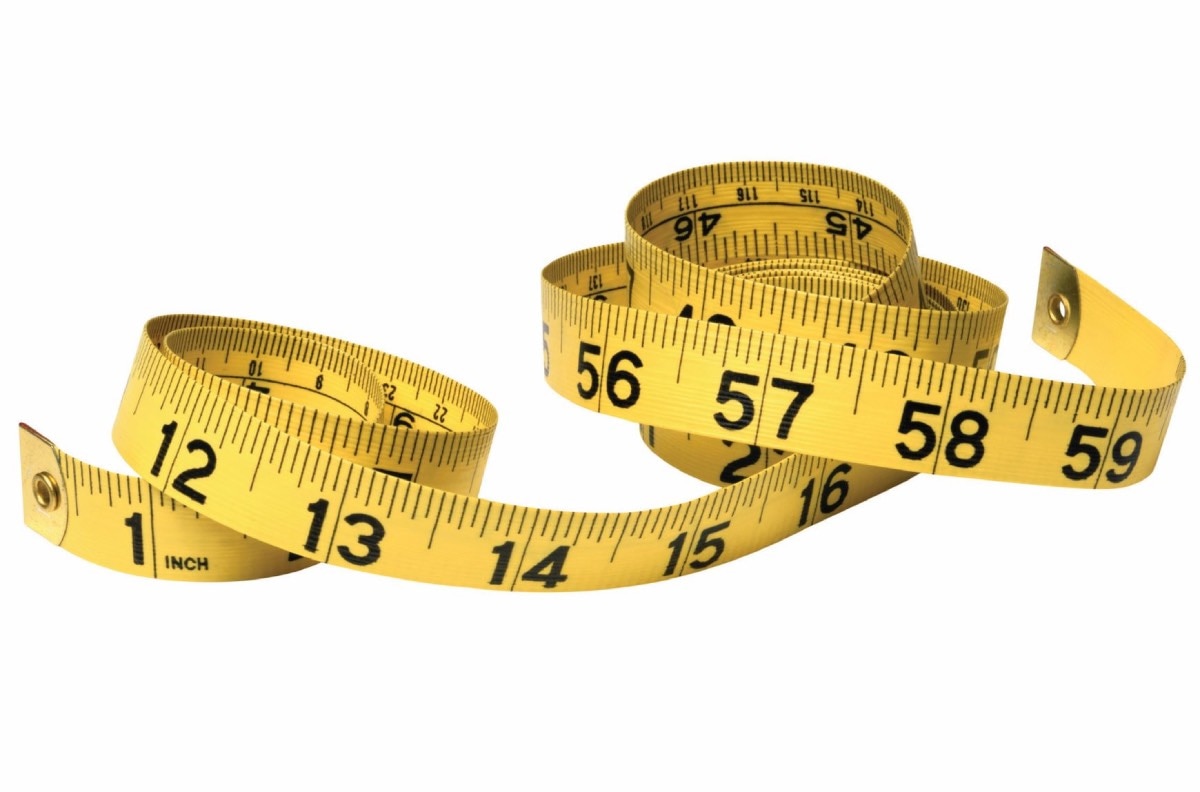
What are some health risks of being overweight or having obesity?
Extra weight may increase your risk for
- type 2 diabetes
- heart disease and stroke NIH external link
- high blood cholesterol NIH external link
- high blood pressure NIH external link
- kidney disease
- fatty liver disease
- problems with pregnancy
- certain types of cancer NIH external link
Learn the health risks of being overweight or having obesity during pregnancy.
Why do some people become overweight?
Many factors, including consuming more calories than you need from food and beverages, lack of sleep, and low levels of physical activity, may play a part in gaining excess weight. Here are some factors that may influence weight and overall health.
The world around you. Your home, community, and workplace all may affect how you make daily lifestyle choices. Food and beverages high in fat, added sugar, and calories are easy to find and sometimes hard to avoid. And they often cost less than healthier choices like fruits and vegetables. On top of that, smartphones and other devices may make it easy for you to be less active in your daily routine.
Families. Overweight and obesity tend to run in families, suggesting that genes may play a role in weight gain. Families also share food preferences and habits that may affect how much, when, and what we eat and drink.
Medicines. Some medicines, such as steroids NIH external link, and some drugs for depression NIH external link and other chronic health problems, may lead to weight gain. Ask your health care professional or pharmacist about whether weight gain is a possible side effect of medicines you are taking and if there are other medicines that can help your health without gaining weight.
Emotions. Sometimes people snack, eat, or drink more when they feel bored, sad, angry, happy, or stressed—even when they are not hungry. Consider whether it might be your emotions making you want to eat, and try doing something else to help you cope with negative feelings or celebrate your good mood. That can help you feel better and avoid weight gain.
Lack of sleep. In general, people who get too little sleep tend to weigh more than those who get enough sleep.2 There are several possible explanations. Sleep-deprived people may be too tired to exercise. They may take in more calories simply because they are awake longer and have more opportunities to eat. Lack of sleep may also disrupt the balance of hormones that control appetite. Researchers have noticed changes in the brains of people who are sleep deprived. These changes may spark a desire for tasty foods.3 Learn more about sleep deprivation and deficiency NIH external link and strategies for getting enough sleep.
Consuming Healthy Food and Beverages
Being aware of food portion size, the kinds of foods and beverages you consume, and how often you have them may be a step to help you make healthier food choices.
What kinds of foods and drinks should I consume?
Visit ChooseMyPlate.gov External link to learn more about what kinds of food and drinks to consume and what kinds to limit so you can have a healthy eating plan.
Consume more nutrient-rich foods. Nutrients—like vitamins NIH external link, minerals NIH external link, and dietary fiber—nourish our bodies by giving them what they need to be healthy. Adults are encouraged to consume some of the following foods and beverages that are rich in nutrients
- fruits and vegetables
- whole grains, like oatmeal, whole-grain bread, and brown rice
- seafood, lean meats, poultry, and eggs
- beans, peas, unsalted nuts, and seeds
- sliced vegetables or baby carrots with hummus
- fat-free or low-fat milk and milk products
If you're sensitive to milk and milk products, try substituting
- nondairy soy, almond, rice, or other drinks with added vitamin D and calcium
- lactose-reduced fat-free or low-fat milk
- dark leafy vegetables like collard greens or kale
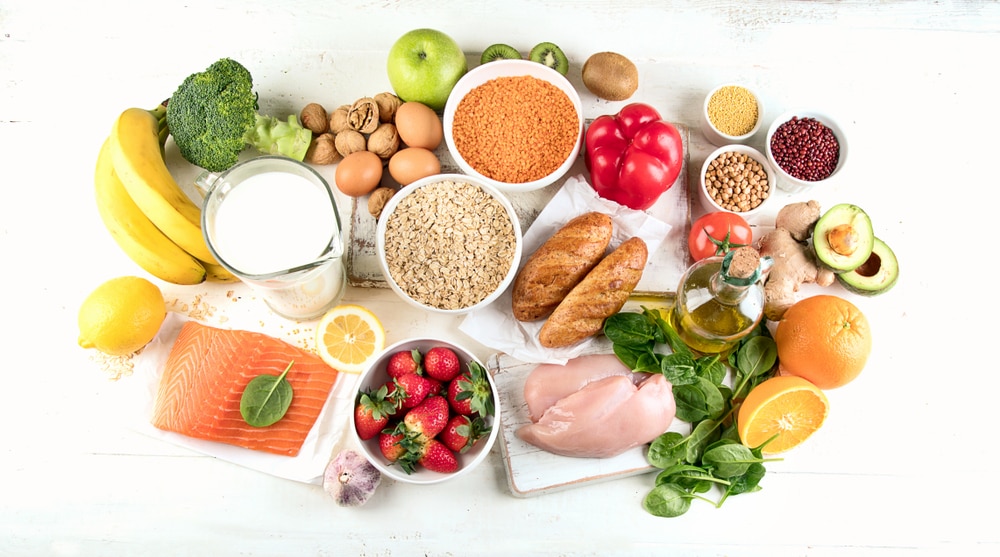
Consume less of these foods and beverages. Some foods and beverages have many calories but few of the essential nutrients your body needs. Added sugars and solid fats pack a lot of calories into food and beverages but provide a limited amount of healthy nutrients. Salt does not contain calories, but it tends to be in high-calorie foods. Adults should aim to limit foods and drinks such as
- sugar-sweetened drinks and foods
- foods with solid fats like butter, margarine, lard, and shortening
- white bread, rice, and pasta that are made from refined grains
- foods with added salt (sodium)
- whole milk
Easy snack ideas. Instead of sugary, fatty snacks, try
- fat-free or low-fat milk or yogurt
- fresh or canned fruit, without added sugars
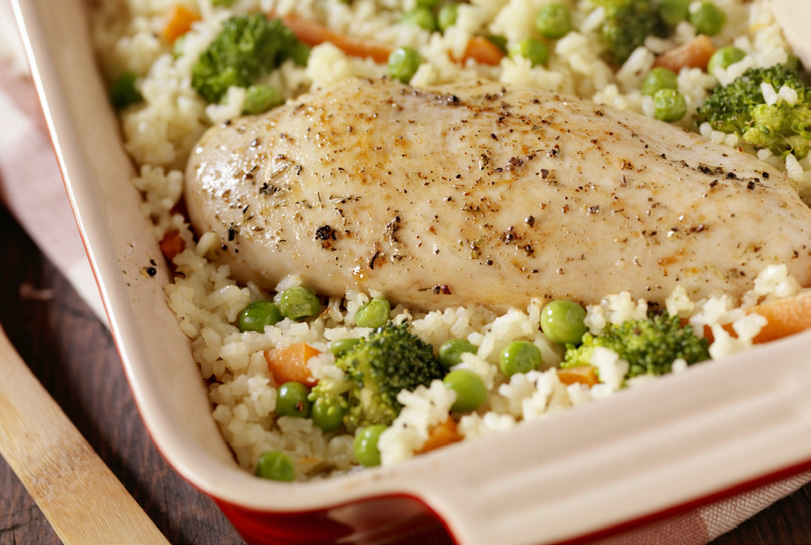 Making better choices, like baking instead of frying chicken, can help you cut down on the added sugars and solid fats you consume.
Making better choices, like baking instead of frying chicken, can help you cut down on the added sugars and solid fats you consume.How can I follow a healthy eating plan?
These tips may help you stay on track with your plan to eat healthier.
- Reduce the overall calories you consume. If you consume more calories than you use through daily living, exercise, and other activities, it may lead to weight gain. If you consume fewer calories than you use through physical activity, it may lead to weight loss.
- Have healthy snacks on hand. Whether you are at home, at work, or on the go, healthy snacks may help combat hunger and prevent overeating. Look for snacks that are low in added sugar and salt. Your best bets are whole foods—like baby carrots, fresh fruit, or low-fat or fat-free yogurt instead of chips, cakes, or cookies—rather than packaged or processed foods.
- Select a mix of colorful vegetables each day. Choose dark, leafy greens—such as spinach, kale, collards, and mustard greens—and red and orange vegetables such as carrots, sweet potatoes, red peppers, and tomatoes. If you have had kidney stones, be aware that some vegetables, like spinach and sweet potatoes, are high in oxalate, a chemical that combines with calcium in urine to form a common type of kidney stone. So, if you have kidney stones, you may need to watch how much of this you eat. But for others, these are great choices. Eat a rainbow of food colors!
- Choose whole grains more often. Try whole-grain breads and pastas, oatmeal, or brown rice.
- Shift from solid fats to oils. Try cooking with vegetable, olive, canola, or peanut oil instead of solid fats such as butter, stick margarine, shortening, lard, or coconut oil. Choose foods that naturally contain oils, such as seafood and nuts, instead of some meat and poultry. And use salad dressings and spreads that are made with oils rather than solid fats.
- Switch from frying to baking or grilling. Instead of fried chicken, try a salad topped with grilled chicken. Instead of ordering fries when eating out, ask for a side of steamed veggies.
- Limit foods and beverages that are high in sugar and salt. Avoid snack foods high in salt and added sugars; and keep away from sugary soft drinks.
- Read the Nutrition Facts label on packaged foods. The Nutrition Facts label tells you how many calories and servings are in a box, package, or can. The label also shows how many ingredients, such as fat, fiber, sodium, and sugar—including added sugars—are in one serving of food. You can use these facts to make healthy food choices.

How much should I consume?
How much you should consume each day depends on your weight, sex, age, metabolism, and how active you are. In general, men need more calories than women. Younger adults need more calories than adults in midlife and older. At all ages, adults who get more physical activity need more calories than those who are less active.
Keeping your food and beverage portions in check may help you reach or stay at a healthy weight. To learn more about a healthy eating plan and the amounts of food and beverages that are right for you, visit ChooseMyPlate.gov External link.
What if I need to lose weight?
Talk with your health care provider about what a healthy weight is for you. If you are overweight or have obesity, your health care professional may recommend weight loss. Consider getting help through a structured weight loss program.
Experts recommend beginning with a weight loss of 5 to 10 percent of your starting weight over a period of 6 months.4 So if you weigh 200 pounds, that would mean losing 10 to 20 pounds. Modest weight loss has been shown to improve health, and it may bring you other benefits such as better mood and more energy.
Use a diary to track the foods and beverages you consume. Keep a food and beverage diary that lists everything you consume in a day. The diary helps you
- see when you are eating a healthy diet and when you might be slipping into less healthy eating (and drinking) patterns
- find out when your eating pattern is most healthy so you can try to do that more often
- discover when and how your diet could use some changes to help you lose weight and improve your health
More adults are using different ways to track health habits, including what and how much they eat and drink, sleep, and weigh. Using apps on mobile phones, tablets, and other devices has become a popular way to track and improve health. These apps have many features. If you are interested, look for apps that best fit your health goals and lifestyle habits.
If you prefer keeping a written diary, check out the sample food and beverage diary below. It includes a section for writing down what the time was and what your feelings were when you consumed the food or beverage. Writing down your feelings may help you identify your eating triggers. For example, you may notice that you sometimes overeat when you are with a big group, simply because everyone around you is consuming large amounts of food and beverages. The next time you share a meal with a group, think about your triggers and try to limit how much you consume by eating more slowly.
Ideas to support your weight-loss efforts. In addition to keeping a diary, focusing on behaviors related to your eating and physical activity level can help jump-start your weight-loss efforts. It can also help you maintain weight loss for the long term. These ideas may help you lose weight.
Consuming food and beverages
- Make a shopping list and stick to it. Don't shop when you are hungry.
- Don't keep foods high in fat, added sugar, or salt in your home, workplace, or car. You can’t consume what’s not there! Keep healthier snacks ready so that you make the healthy choice the easy choice!
- Ask for smaller servings. At a restaurant, consume only half your meal and take the rest home.
- Eat your meals at a table. Turn off the TV and all other devices so you don't mindlessly eat or drink too much. Enjoy your food without distraction.
Behavior
- Be realistic about weight-loss goals. Aim for a slow, modest weight loss.
- Seek support. Include your family and friends.
- Expect setbacks. Forgive yourself if you regain a few pounds. Adjust your plan to help you get back on track.
- Add moderate- or vigorous-intensity physical activity to your weight-loss plan. This kind of activity increases your heart rate and makes you break a sweat. Examples are brisk walking, swimming, and dancing.
Sample Food and Beverage Diary
| Time | Food | Feelings | How I Can Improve |
|---|---|---|---|
| 8 a.m. | Coffee with sugar and cream, oatmeal with low-fat milk, and banana | Hungry. Ate my usual breakfast. | I’ll keep eating breakfast every day and continue choosing whole-grain cereal and milk if I’m ever tempted by a sugary donut or high-fat breakfast sandwich |
| 11 a.m. | Low-fat yogurt | Stomach starting to rumble. | Adding fresh fruit or whole grains will help keep me from overeating later. |
| 12:30 p.m. | Roast beef and cheese sandwich on whole-wheat bread, potato chips, can of soda | Probably ate more than I was hungry for because of the “lunch deal" the deli offered me. | If I pack my lunch, I won't be tempted in the lunch line. Choose water instead of soda. |
| 2:30 p.m. | 1/2 chocolate bar from coworker, large coffee with sugar and cream | Feeling bored, not truly hungry. | Check in with myself to see if I am really hungry. If I am, a snack like veggie slices with salsa or hummus is more nutritious. |
| 7:30 p.m. | Caesar salad, dinner roll, ravioli (didn't finish the whole serving), 1/2 slice of chocolate cake | Out to dinner with friends, so we all ate big portions! We split dessert, which made me feel healthy. | Next time, I'll have a salad with low-fat dressing. Good choice to split the dessert! |
| 10:30 p.m. | Decaf herbal tea | Had trouble falling asleep. Proud of myself for drinking tea rather than eating a snack! | Next time I have trouble falling asleep, I’ll make the same healthy choice! |
Physical Activity
What are the benefits of physical activity?
Experts recommend External link (PDF, 14.4 MB) that you should move more and sit less throughout the day. You can gain some health benefits if you sit less and do any amount of physical activity. Learn more about the benefits of getting more active External link.
Keep reminding yourself: Some physical activity is better than none.
Being physically active may help you start feeling better right away. It can help
- boost your mood
- sharpen your focus
- reduce your stress
- improve your sleep
Once you are more active, keep it up with regular activities. That will improve your health even more. Studies suggest that, over time, physical activity can help you live a longer, healthier life. It may
- help prevent heart disease and stroke
- control your blood pressure
- lower your risk of diseases like type 2 diabetes and some cancers
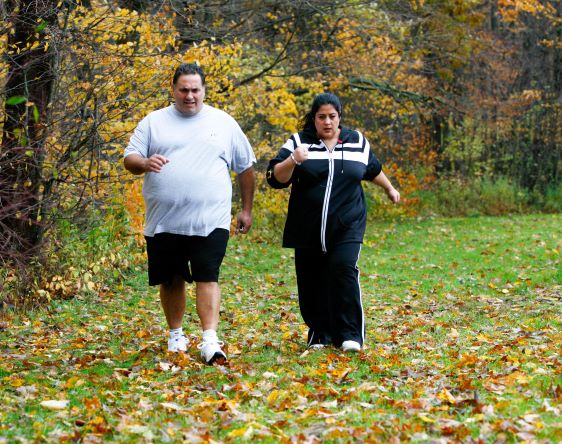
What types of physical activity do I need?
Experts recommend two types of physical activities: aerobic and muscle-strengthening activities.
Aerobic activity. Aerobic activities—also called endurance or cardio activities—use your large muscle groups (chest, legs, and back) to speed up your heart rate and breathing.
Aerobics can be moderate or vigorous. How can you tell what level your activity is? Take the “talk test” to find out. If you’re breathing hard but can still have a conversation easily—but you can’t sing—then you’re doing moderate-intensity activity. If you can only say a few words before pausing for a breath, then you’re at the vigorous level. Start with moderate-intensity activities and then work up to vigorous-intensity activities to avoid injuries.
Choose aerobic activities that are fun for you. You’re more likely to be active if you like what you’re doing. Try getting a friend, family member, or coworker to join you. That may help you enjoy activity and stick with it.
Try one of these activities or any others you enjoy
- brisk walking or jogging
- bicycling (wear a helmet)
- swimming
- dancing
- playing basketball or soccer
Regular aerobic activity can help you
- manage your weight. Aerobic activity uses calories, which may help keep your weight down.
- prevent heart disease and stroke NIH external link. Regular aerobic activity may strengthen your heart muscle. It may even lower your blood pressure. It may also help lower “bad” cholesterol and raise “good” cholesterol, which may lower your risk of getting heart disease.
- prevent other diseases. Even moderate-intensity aerobic activity each week may lower your risk for type 2 diabetes, some cancers, anxiety, depression, and Alzheimer’s disease NIH external link and other dementias NIH external link.
- maintain strong bones. Weight-bearing aerobic activities that involve lifting or pushing your own body weight, such as walking, jogging, or dancing, help to maintain strong bones.
Muscle-strengthening activity. Strength training (or resistance training) works your muscles by making you push or pull against something—a wall or floor, hand-held weights, an exercise bar, exercise bands, or even soup cans.
Try these options
- lift weights—you can even use two full cans of food or gallon-size water containers as weights
- do push-ups, pull-ups, or planks
- work with resistance bands (large rubber bands)
- do heavy gardening (digging, lifting, carrying)
Doing regular activities to strengthen your muscles may help you
- increase bone strength and prevent bone loss NIH external link as you age
- maintain muscle mass and prevent muscle loss as you age or as you lose weight
- work the major muscle groups of your body, such as the chest, back, abdominals, legs, and arms
How much physical activity do I need?
Experts recommend at least 150 minutes a week (a total of 2 ½ hours) of moderate-intensity aerobic activity. You can spread your activity throughout the week—whatever works best for you. Studies show that if you spread activity across at least 3 days a week, you can improve your health, reduce your risk of injury, and keep yourself from becoming too tired.
If you increase your aerobic activity to 300 minutes a week—instead of the recommended 150 minutes—you may even lower your risk for heart disease or type 2 diabetes. Additionally, if you do more than 300 minutes a week of moderate-intensity aerobic activity, you may even reduce your risk for several cancers.
You should also aim for at least 2 days a week of muscle-strengthening activities. To avoid injury, allow at least 1 day of rest for your muscles to recover and rebuild before working the same muscle groups again.
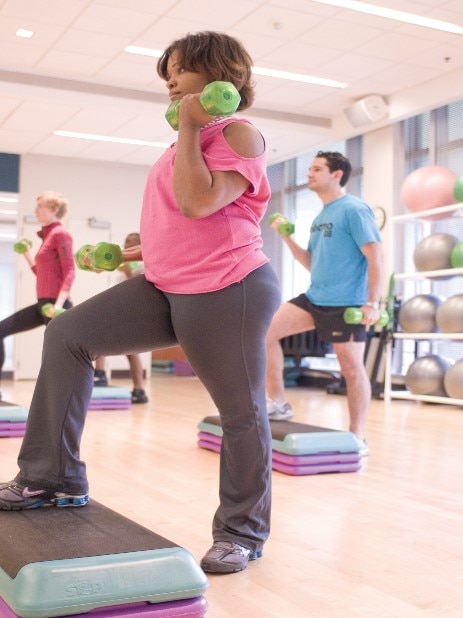
How do I get started?
You don't have to be an athlete to benefit from regular physical activity. Even modest amounts of physical activity can improve your health.
If you have been inactive for a while External link (PDF, 13.8 MB) , you may want to start with easier activities, such as walking at a gentle pace. For example, you could start by walking 5 minutes at a time, several times a day, 5 to 6 days a week. You could gradually increase your time to 10 minutes per session, 3 times a day, and slowly increase your walking speed. Building up slowly lets you work up to more intense activity without getting hurt.
Be sure to increase your muscle-strengthening activities gradually. Start out 1 day a week at a light or moderate intensity. Over time, increase to 2 days a week, and then possibly to more than 2 days. Increase the intensity until it becomes moderate or greater.
Make a plan to stay on track. You may want to try the Move Your Way interactive activity planner External link that lets you set your own weekly goals, choose the activities you want to do, and get personalized tips to help you stay motivated.
You can keep an activity log to track your progress, such as the sample log below or an app on your mobile device. After you do an activity, write down how you were feeling while you were active. As you become more fit over time, try to slowly increase your pace, the length of time you are active, and how many days of the week you are active.
Sample Activity Log
| Date | Activity | Total Time | How I Felt |
|---|---|---|---|
| Mon., Mar. 1 | Walking | 2 x 15 minutes | I kept a good pace. |
| Free weights at home | 20 minutes | ||
| Tues., Mar. 2 | Walking | 30 minutes | |
| Stretching | 15 minutes | Stretching felt great. | |
| Wed., Mar. 3 | Extra walking at work—used the stairs 3 times | About 20 minutes total | I was busy, so I just tried to move more all day. |
| Yoga video at home | 20-minute video | Yoga helped me relax. | |
| Thurs., Mar. 4 | Walking | 15 minutes at lunch and 15 minutes after work | Walking with my coworker was fun and relaxing. |
| Fri., Mar. 5 | Walking | 30 minutes at lunch | My coworker and I picked up the pace today! |
| Free weights at home | 20 minutes | ||
| Sat., Mar. 6 | Water aerobics class | 45-minute class | This class is fun but exhausting. |
| Stretching | 15 minutes | ||
| Sun., Mar. 7 | Gardening | 60 minutes | A surprisingly good workout. |
Try these activities to add more movement to your daily life.
- Choose parking spots that are farther away for extra steps. (Make sure the places where you park and walk are safe and well lit.)
- Walk around the inside of a shopping mall or other large building, especially in bad weather.
- Rake the leaves, wash the car, or do brisk housecleaning.
- Visit museums or the zoo. Many of these activities are free. You and your family can walk for hours and not realize how far you have gone.
- Take a break from sitting at the computer, TV, or other device.
- Start a walking or other active group where you work, live, or worship. Having a buddy can help keep you focused and add fun to your activity.
- If your time is limited, do 10 minutes of exercise at a time. Spread these bursts of activity throughout the day. Every little bit counts!
- Plan ahead to avoid setbacks. Find a backup activity you can do in case of bad weather or injury. If you do have a setback, regroup and focus on meeting your goal again as soon as you can.
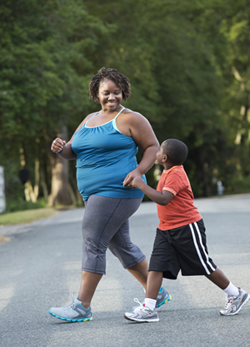 You and your family can walk for hours and not realize how far you have gone.
You and your family can walk for hours and not realize how far you have gone.Being Good to Yourself
Many people feel stress in their daily lives. Stress can cause you to overeat, feel tired, and not want to be active. Healthy eating and regular physical activity may help offset the effects of stress.
Try some of these other ideas to help relieve stress and stay on track with improving your health.
- Get adequate sleep.
- Try a new hobby or any activity that sparks your interest.
- Surround yourself with people whose company you enjoy.
There are apps that give helpful tips on stress management practices and help you monitor the situations that prompt stress. Check them out to see if one works for you.
A balanced eating plan, regular physical activity, stress relief, adequate sleep, and other behaviors may help you stay healthy for life!




No comments:
Post a Comment